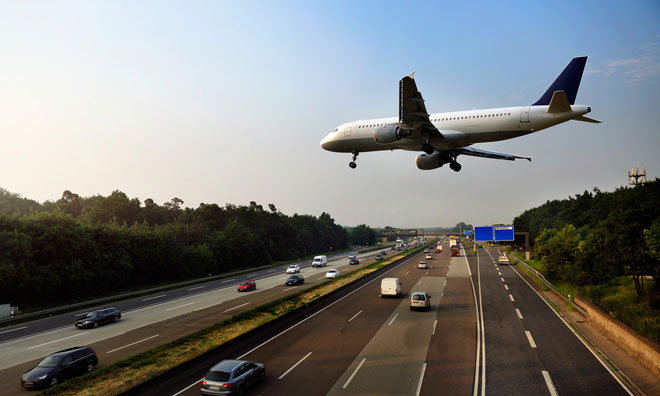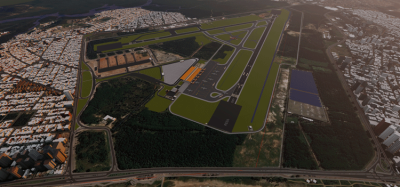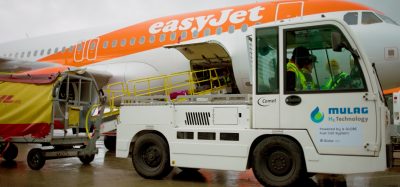Reconnecting Europe with a ‘Mega-Hub’ airport: A crisitunity
- Like
- Digg
- Del
- Tumblr
- VKontakte
- Buffer
- Love This
- Odnoklassniki
- Meneame
- Blogger
- Amazon
- Yahoo Mail
- Gmail
- AOL
- Newsvine
- HackerNews
- Evernote
- MySpace
- Mail.ru
- Viadeo
- Line
- Comments
- Yummly
- SMS
- Viber
- Telegram
- Subscribe
- Skype
- Facebook Messenger
- Kakao
- LiveJournal
- Yammer
- Edgar
- Fintel
- Mix
- Instapaper
- Copy Link
Posted: 22 November 2016 | John Wensveen, Ph.D., Professor of Air Transportation, Purdue University (USA) | 9 comments
In this analytical reaction John Wensveen, Ph.D details why the expansion decision benefits neither Heathrow, London itself, nor the UK…


The UK Airports Commission final report was published on July 1, 2015 concluding London Heathrow Airport presents the strongest case for a new northeast runway to serve the country and support expansion to new destinations. As Allan wrote in his recent article, the decision has been made to move forward with the report’s recommendations and it appears, such a decision is not in the best interest of London Heathrow, London area airports, or the UK as a country.
The notion of establishing London Heathrow as a ‘mega-hub’ airport to serve increased connectivity in the UK makes no sense whatsoever.
The UK does not need a mega-hub airport and it can be argued that the UK cannot support such a facility. It can also be argued that Europe as a region, needs and can support, a single mega-hub airport, or a northern and southern mega-hub airport that would ultimately alleviate congestion, on the ground and in the air, at Europe’s busiest airports. Additionally, intra-European and international connectivity would be increased, airline schedules would be more efficient, route distances would be decreased generally, and savings could be passed to the customer (passenger and cargo/freight).
The notion of establishing London Heathrow as a ‘mega-hub’ airport to serve increased connectivity in the UK makes no sense whatsoever.
In 1999, the International Air Transport Association (IATA) forecasted demand for air travel would double by 2010 and freight tonnage by 2007. In 2016, per the Boeing: Traffic and Market Forecast, this trend continues and it is expected passenger demand will increase at an annual rate of 4.8% and freight tonnage at an annual rate of 4.2%. Airbus reports similar trends. Despite current anticipated challenges as a result of Brexit, UK demand for air travel will continue to increase and the congestion issues faced by airports in the southeast of England will only worsen. As a region, Europe will not be able to handle increased demand unless measures are taken now and the decision to build a third runway at London Heathrow is not the answer.
There is a bigger picture that seems to be ignored and the focus should not be on London or the UK but on the European region. Given forecasted projections for increased demand on the air transport system, the lack of airport capacity will constrain competition and traffic growth. Airlines and airports will not be able to respond to increased demand and the consumer benefits of a liberalised aviation market many not fully materialise.
Approximately 38 of European airports ran out of capacity by 2010 meaning there is limited capacity at existing hubs to handle the steady increase in passengers. Airport congestion represents a potential crisis situation for Europe. As airlines respond to the impact of full-scale liberalisation, they are constantly seeking ways to improve efficiency. Airlines are increasingly concentrating their operations at major European hub airports accentuating the capacity problem. Given the background provided above, opportunities exist to tackle the congestion issue by establishing a mega-hub airport somewhere in Europe or through the creation of a northern and southern Europe mega-hub concept.
The current geographic placement of the European airport system is not optimal meaning airports are not generally centrally located in relation to one another or in relation to the current airline route network.
The Optimal Air Carrier Hub Location for Europe in the 21st Century
From 1996-1999, a research study entitled, ‘The Optimal Air Carrier Hub Location for Europe in the 21st Century,’ was undertaken by Dr. John Wensveen and updated in 2016. The results remain similar indicating there is a need for a mega-hub airport not in London but on the European mainland. Interestingly, as indicated in the 1999 study, the 2016 results show that London Heathrow cannot accommodate a third runway based on a number of variables. Much of the research was based on a centrality index model which will be briefly explained in this article.
Approximately 38 of European airports ran out of capacity by 2010…
The study
The study contributes to the aviation industry in a number of areas and is of great benefit to airlines, airports, planners and policy makers in Europe because the selected model provided important data regarding the centrality of European airports. In the determination of Europe’s optimal hub airport location, the selected model enabled the identification of points where pressure for airport development will be at a maximum.
The findings of the study also revealed airport role recognition and determined resources to target other market segments. This study helps determine the future of air transport in Europe. It is strategically important for airlines and airports in terms of network strategy and development plans by providing airlines with information needed for suitable hub options and how airports develop their business. It also aids governments with planning controls and environmental management.
The main aims of this study were to identify the optimal location for a hub airport to serve Europe in the twenty-first Century and to examine implications of this for airlines, airports, planners and policy-makers. To determine the optimal theoretical hub location, this study did the following:
- Defined Europe’s boundaries
- Obtained passenger traffic data for European airports
- Determined how many airport locations should be considered
- Selected a model to measure optimal hub location and identified potential locations
- Examined the implications of hub development at theoretical locations for airlines
- Airports, planners and policy-makers
- Identified the best site for a European hub
The study provided information on airport capacity, Europe’s political environment, and trends and implications associated with the implementation of full-scale liberalisation. Airline alliances and partnerships were presented including information on globalisation and airport privatisation. It was found that liberalisation has presented new opportunities for airlines and airports have benefited from increased services and route expansion. As a result, hub airports have expanded while some regionals airports have not. As a result of increased airline alliances, there has been decreased competition among major airlines and expanded route networks through code-share agreements. Additionally, results show increased competition among the rise of low-cost carriers which has also resulted in increased airport competition throughout Europe.
The study clearly defined what a “hub” is including the concepts, issues and controversies associated with hubbing. The history of air transport hub development was discussed including the advantages and disadvantages for airlines, airports and consumers along with the trends and implications for Europe. It was found that a hub is a cost-saving tool and that the main aim is to maximise the number of journey choices for the passenger using the airline’s network. The hub and spoke concept was developed from deregulation in the United States and as a result, deregulation formed an important discussion. It was established that, although European airlines have not maximised their hubbing potential, hub expansion in Europe will be a key factor in the future development of an efficient air transport system.
The study discussed hub location models in detail and established through the literature that although much work has been done on the benefits of airport hubs and spokes, little work has been done to establish the optimal airport location on a macro scale. After a number of hub location models were discussed, it was determined that a geographic suitability model was the most relevant model for determining airport site location. However, limitations were associated with this particular model which led to the selection of another model defined as the centrality index (CI).
Hub expansion in Europe will be a key factor in the future development of an efficient air transport system…
The centrality index was selected because of its ability to measure the central location of selected sites. It is able to do this my measuring the accessibility of a location with respect to population divided by distance. Because this particular model was first applied to the sea ports industry of Northern Europe, the model had to be developed further to overcome some limitations resulting in an external CI, a local CI, and a total CI.
The external CI was calculate to provide a measure of centrality with respect to population centres on a Europe-wide scale, thereby, providing a measure for the potential hub traffic of individual airport locations. The local CI was calculated to measure the local catchment area or population within one hour’s driving distance of the established 46 airport sites. These results provided important information for airports and airlines in terms of knowing the local market. The total CI combined the external and local CI’s resulting in one figure representing the combined centrality for each of the 46 airport locations. It was found that some uncertainties were associated with the total CI and as a result, the external CI was found to be the most effective measure of airport capacity. The study also discussed the selection of a statistical computer package (SPSS) and regression analysis as a method to forecast potential development at each of the 46 airport sites.
The Golden Airport Zone
The external CI results indicated that a ‘Golden Airport Zone’ (GAZ) existed based on the centrality of Europe’s top 46 airports by total passenger traffic. The results showed that this zone formed a triangular shape between Dusseldorf, Cologne and Brussels. It was found that Dusseldorf had the highest centrality figure, Cologne placed second, and Brussels placed third. Major locations with important roles in the European airport network had a tendency to rank closer to the middle range while less important locations ranked fairly high as the external CI did not calculate the population immediately local to an airport.
Once the Golden Airport Zone was established, the external centrality index was applied to the closest airport to the GAZ not included in the original top 46 airports. It was found that Maastricht had a higher centrality than Dusseldorf, Cologne or Brussels. This result indicated that there might be more central airport locations than those established through the initial application of the external CI.
Dusseldorf had the highest centrality figure, Cologne placed second, and Brussels placed third…
It was suggested that if market forces were left to prevail unchecked, then it would be this area which be under pressure for airport development. It was also discussed that outside the top ranked airports, the external CI provided a good indication of airport locations most suited to the attraction of transfer traffic providing strategic implications for how airports develop.
A regression analysis was done using SPSS to forecast potential development at each of the 46 airport sites. A simple linear regression was applied testing a dependent variable against a list of independent variables. Although some statistical interference was established, the results indicated that as local centrality increased in an economically viable area, so did the number of passengers serving an airport.
The study discussed the requirements for assessing the development of a potential airport site and presented suitable airport site locations. It was found that there is no standard procedure for determining airport site selection although the more important international references were noted. Nine major steps in the site evaluation and selection process were discussed covering the necessary criteria required.
Due to the lack of available information on long-term development plans for airports, a survey was conducted to obtain information not readily available and sometimes privileged. Of the top 46 airports considered in this study, the survey was sent to 16 of the top 19 airports according to external centrality index results as well as 8 smaller airports located near the Golden Airport Zone. Of the 24 airports surveyed, 24 responses were received resulting in a 100% response rate. The results of this survey indicate that the topic of this study is important and of concern to European airports of all sizes.
Each of the 24 airport locations was analysed for potential hub development based on a number of factors. It was found that determining the optimal airport site for Europe is a complex process and for the purposes of this study, potential locations were established primarily on the basis of the external centrality index and available land for future terminal and runway development.
“The mega-hub airport discussion is not a London area discussion but is much bigger and should be focused on Europe…”
After all potential sites were surveyed, the external centrality index results for the 8 smaller airports on the survey were calculated. It was found that there are less busy airports near the Golden Airport Zone with higher external CI’s than those originally established in this area. Antwerp, Brussels South Charleroi, Lille, Eindhoven, Maastricht, Liege, Rotterdam and Dortmund all had very high centrality index results.
Antwerp placed second out of all airports analysed in this study and it was noted that Antwerp’s high centrality corresponded with that found in earlier studies by the Port of Antwerp. This result proved the accuracy of this study as did a discussion on the location of the “Iron Rhine” railway system located within the Golden Airport Zone. A later discussion also noted that the results of the centrality index were accurate given the location of DHL’s hub at Brussels and TNT’s hub at Liege.
It was determined that a number of possible options exist for establishing the optimal hub airport location and that the best site would be that with the highest centrality combined with the greatest amount of land area available for a development of this magnitude.
This study found that sufficient room does not exist at most airports for additional runway development, including London Heathrow.
If a single location was to be selected, it was found Lille, France would be a logical choice. Of all the airports analysed in this study, Lille offers the highest centrality of any airport capable of accommodating future runway development.
It was noted that single mega-hub airport location for Europe is just one option for reducing airport congestion. A more realistic option was discussed promoting the Northern and Southern hub concept. The finds of this study indicated that Lyon or Paris, France would be ideal candidates to become a southern hub.
The study discussed air transport and the environment and said that this is the most controversial subject in the future development of air transport. It was also said that the environment is the major deciding factor in how air transport develops. The main areas of concern were presented and it was found that aircraft noise and emissions were the two largest areas of concern.
This study found that sufficient room does not exist at most airports for additional runway development, including London Heathrow…
The timing of this study in 1999 and 2016 could not be better as the effects of full-scale liberalisation have materialised and continue to evolve. The results of this study provide a warning that runway capacity must be developed so that future demand can be accommodated. A lack of available runway space is the ultimate limitation in European air transport. If all the participants do not plan now, the potential airport congestion crisis will become a reality.
Airport capacity must be given more attention while at the same time preserving social and economic benefits. There needs to be a unified will to build runways and manage airspace better in an era where environmental restrictions are increasing and political boundaries are being removed. If the European air transport industry is to meet the challenge of accommodating future demand, it must make a start now.
Runway expansion at London Heathrow will be a detrimental mistake…
A number of recommendations were presented in the study to help airports alleviate congestion problems. Some of these recommendations included increased use of uncongested airports for general and business aviation, decreased frequencies to congested airports, the promotion of new air routes, use of larger aircraft, revised slot allocations, and improved management of the air transport system. The last recommendation would include the use of the Future Air Navigation System (FANS). The study suggests that because land availability is a major factor in determining development potential of selected sites, airports should implement land acquisition policies where possible to acquire surrounding lands before they disappear. Land that is held in reserve will be the key to future expansion.
Commitment is the key to an efficient air transport industry in Europe. The idea of increasing runway, taxiway and terminal capacity cannot be overstated. Passengers and products must be transported from point to point as quickly as possible and airports must be made more accessible in order to be more functional. Runway expansion at London Heathrow will be a detrimental mistake that will only cause increased congestion issues on the ground, in the air, and negatively impact European air transport operations.
To reinforce the content of this article, the mega-hub airport discussion is not a London area discussion but is much bigger and should be focused on Europe as a region. Greater effort should be focused on reconnecting the UK and Europe but this is bigger than an aviation issue. There is an unprecedented crisis of confidence across the European Union and there should be an official communication strategy to reconnect citizens. There is no joint communication plan with measurable targets. Cities and regions are not playing together. There is disenchantment with institutions and politics. There is a need to restore public approval of the EU as local and regional authorities have been overlooked. There needs to be increased attention paid to the historical, cultural, philosophical and sociological foundations of Europe.
Is this how Europe reconnects?
It’s time for the air transport sector to take advantage of the ‘crisitunity!’
This article was written in response to Steven Woolgrove Allan’s article, ‘Does the UK really need a ‘Mega-Hub’ airport?’.

















This article presents quite a compelling argument and certainly takes the needed long view regarding the necessary infrastructure required for Europe to compete in the era of global hubs. (e.g. Dubai and Istanbul)
You mention a 2016 update to your Study in the article. Is this available in the public domain?
Hi Jim,
Thank you for the input. Yes, this study does lead to a compelling discussion. Unfortunately, I will not be making this study public as of yet as I plan to continue with the research and publish a lengthier deliverable in 2017.
It’s a pity the article doesn’t include a link to the study (based, I understand, on an update to the author’s PhD thesis) that it refers to.
I’d love to see the evidence base for the many strange assertions that he makes.
For example, the statement that ” the 2016 results show that London Heathrow cannot accommodate a third runway based on a number of variables” is intriguing, to say the least.
Hi Dave,
This study is not publicly available as of yet.
The original study was fully accepted by various professionals and agencies including a review by the European Commission.
Given the content length of an article, it is impossible to outline all the parameters and variables incorporated into the study then and now. As for London Heathrow, based on the variables used in the study, the formula indicates a third runway should not be pursued. More than seventy factors are incorporated into the formula and based on the output of the calculations, LHR falls well below other options.
A very bizarre academic study : the « golden zone » is an incredibly small area. When the author ventures to think that the best place could be elsewhere, he finds out that Antwerp might be better. Taking a brave and bold attitude he goes as far away as Lille!
Assuming two hubs would be required (“a more realistic option”) rather than one mega hub, Paris could be the Southern hub: Lille would be the Northern hub, Paris the Southern hub?
Is that a joke?
In response to your comment, I want to clarify some information as it seems you did not read the article in full. The results of the study are based on a centrality index incorporating a proven and accepted formula used in location analysis throughout the world. The index concluded that from a centrality perspective, the Golden Airport Zone (GAZ) is the most central point in Europe based on current airport locations and on current airline route networks. This “small” location is the nucleus of the centrality index given the above parameters. It does not mean this is the best place to develop a mega-hug airport. Additionally, you misquoted the results of the northern and southern hub discussion. As the article says, one recommendation is to establish a mega-hub airport at a single location or develop a northern and southern hub concept. Lille is the recommended single mega-hub location given its centrality index. If the northern and southern hub concept was pursued, it was recommended that Paris or Lyon would be potential candidates. No where in the article is a location presented for a northern location. Your statement, “Assuming two hubs would be required (“a more realistic option”) rather than one mega hub, Paris could be the Southern hub: Lille would be the Northern hub, Paris the Southern hub? Is that a joke?” is not accurate and was not presented as such in the article. I wanted to clarify and encourage you to reread the article.
Hello John,
In the 1970s (before the age of computers), I was looking for a replacement for the existing Antwerp Airport. While at the time only a regional airport was required, I also looked into a new hub to complement or even replace Brussels-Zaventem and Amsterdam-Schiphol. My conclusion was an offshore location against the Dutch island of Goeree and the Brouwersdam seawall (behind which today is the Grevelingen Lake). I then realized it was in fact not that far from the London metropolis and that the location could well serve the three capitals. Perhaps I still have a map of the layout I envisioned … Thanks for you research!
Hi Paul,
That sounds like an interesting project to research despite how long ago you initially came up with the idea. It may have more practicality than ever given the current state of air transport in Europe. I’d be interested to learn more.
Best regards,
John
Hi John,
After some digging in my old papers I only found two surviving location maps: a Michelin map and a had drawn map to situate the site between Amsterdam and Brussels. I remember the plan had 4 parallel runways with each a 800 m separation (the minimum standard at the time for independent flight ops). You can still see that on the maps. At the northern tip it did hug the head of the Goeree island and spread out to the SW, in front of the seawall. I can send you a scan if you wish. Paul